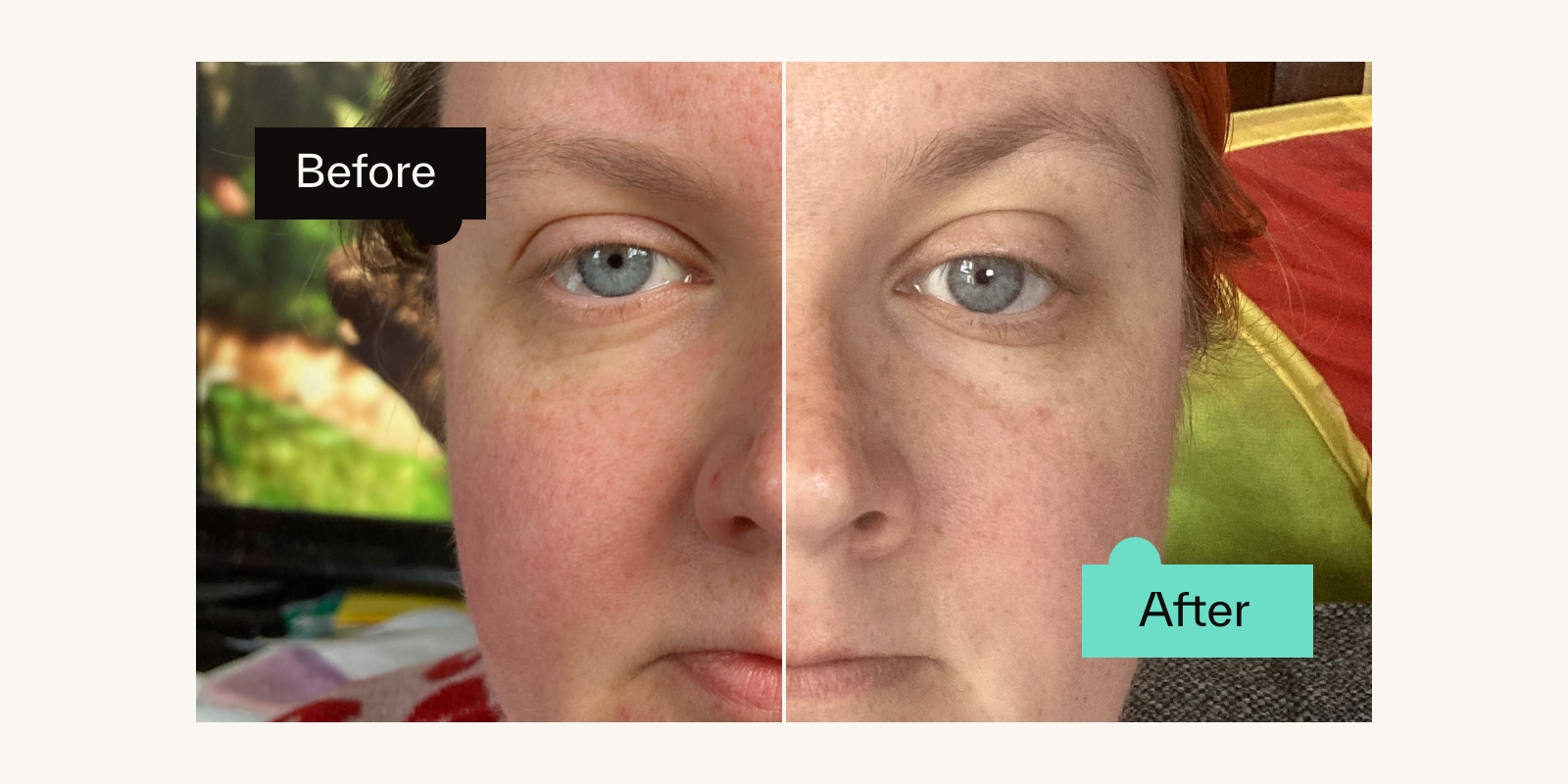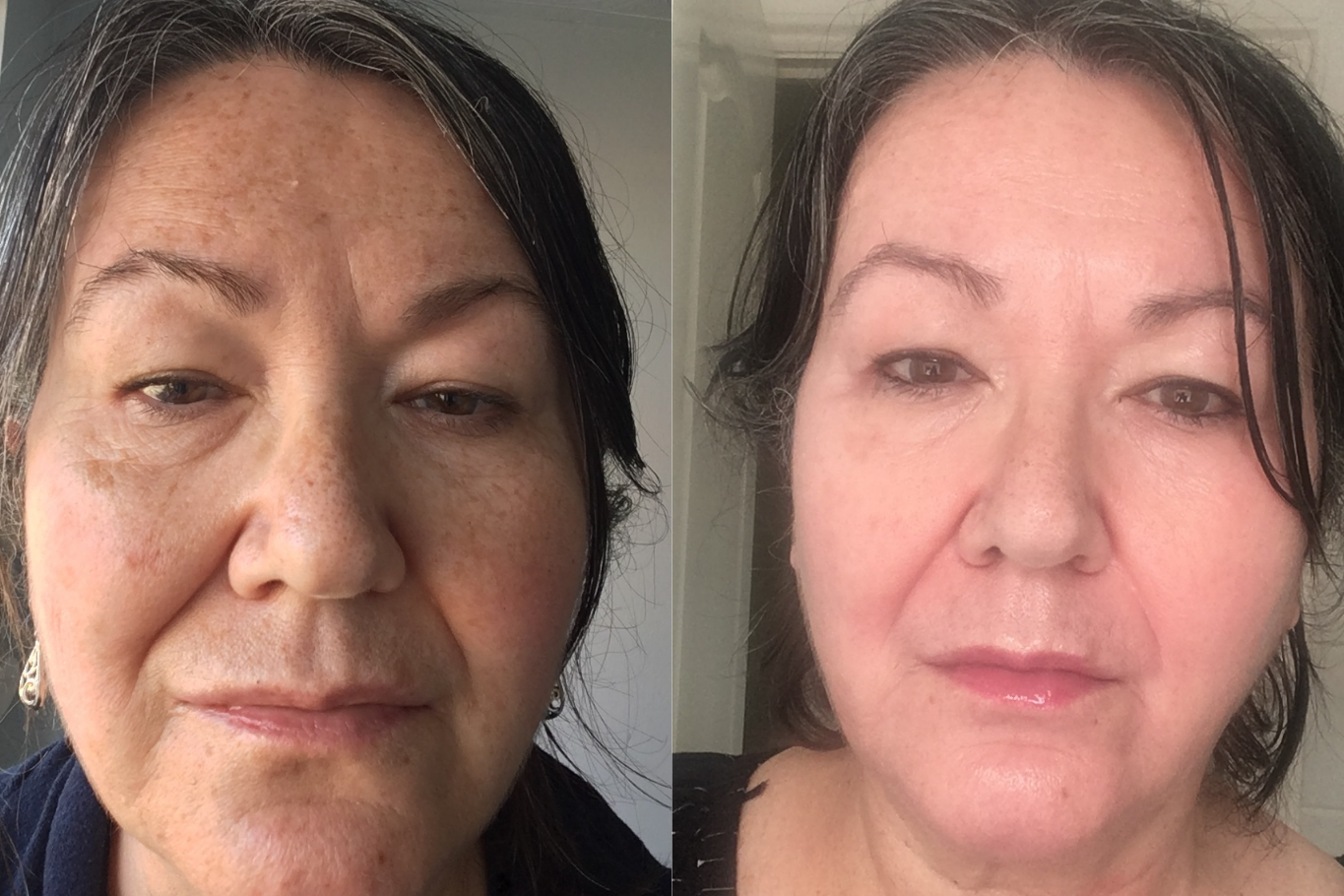Welcome to another Dermatica Skin Journey, where we ask real people about their skin concerns, goals, and routine — and how they got on with their personalised Dermatica formula.
Alison has been trying to create a rosacea-friendly skincare routine for years, but never saw the results she was hoping for. This month, she told us about the progress she’s made since starting her Dermatica treatment plan.
Here’s how she feels now she’s discovered prescription skincare…
Hi Alison, could you tell us about your skin journey before Dermatica?
I was diagnosed with rosacea eight years ago (around six weeks before my wedding — great timing). I’ve spent years, on and off, trying different products, but never managed to commit to a solid routine due to either the price of products or not seeing the results I’d hoped for. Lots of trial, error, and stinging faces.
It’s really hard when you can’t find products that work for you. What made you decide to try Dermatica?
I’d seen Caroline Hirons post about Dermatica on her Instagram — she was offering a code to get the first month for £2.90, then 15% off the next two months. It was posted around Rosacea Awareness Month so it grabbed my attention. I was feeling a bit sorry for myself at the time and had been wanting to try getting my redness under control, so I thought I’d give it a try.
Rosacea can be tricky to treat on your own. Talk us through your results — when did you notice a difference?
I’d say it was between four and six weeks that I started seeing a difference. I no longer look flushed all the time — it’s been such a confidence boost for me because the constant redness really affected my self-esteem. I’m not a big makeup wearer, so before I felt like my rosacea was always on show.
I no longer look flushed all the time — it’s been such a confidence boost for me because the constant redness really affected my self-esteem.
How has your skincare routine changed since starting treatment?
Before, I kept things simple and focused on hydration, using hyaluronic acid in both my AM and PM routines. In the evening, I also used borage seed oil to try and calm my redness. Now, I’ve replaced that with my Dermatica treatment at night, which I use after double cleansing. I still use the same serums and moisturisers — both containing hyaluronic acid — and, of course, I apply SPF 50+ every morning to protect my face from the sun. I’ll occasionally try new products if I get a sample, but other than that I’ll stock up on my favourites when they’re on offer and stick to them.
In the past, I never took skincare really seriously — I’d have all the lotions and potions, but never knew how to get the best results from them. I’d also get disheartened when I didn’t see results, and give up. Having everything in one bottle is so much easier for me. I’ve managed to create a routine, but still only have three or four products in total so I don’t overwhelm myself.
Finally, what’s your advice for anyone looking to try custom prescription skincare?
If you can afford it, I’d say go for it. Make use of referral codes and introductory offers — it might surprise you.
Our derms say…
Alison’s rosacea has hugely improved since starting a personalised formula. We customised her treatment to tackle the underlying causes of rosacea, using antimicrobial ingredients you won’t find in ready-made products on the high street. Our main advice is to keep things simple while you’re using our treatment. Your rosacea can still flare, so make sure you avoid any new actives or changes to your routine. It’s also best to avoid triggers we know for rosacea such as UV exposure, spicy or rich foods, alcohol, tobacco and caffeine to maintain your progress where you can, or at least enjoy them in moderation.
Sharing your skin journey can help others find the solution to theirs. To get involved, head to our Facebook or tag us in your skin selfies on Instagram with the hashtag #DermaticaDifference.
Want to see more skin journeys? Click here.
Dr Catriona Maybury
Dr Catriona Maybury is a Consultant Dermatologist, working as Medical Lead for Dermatica and at St George’s Hospital in London. Catriona completed her specialty training at St John’s Institute of Dermatology in London. Catriona has a special interest in medical dermatology, completing a PhD in liver fibrosis amongst psoriasis patients at King’s College London. Catriona is a certified coach and worked as Dermatology Section Editor for the British Medical Journal.




